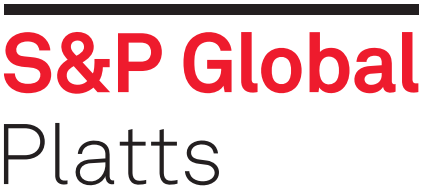
The COVID-19 pandemic may have given additional impetus and momentum to protectionism in steel markets, which has been rising steadily around the world since the global financial crisis of 2008-09 and looks set to continue that way, World Steel Association Director General Edwin Basson said in an interview with S&P Global Platts June 17.
The pandemic has broken some supply chains which may become more regional, less global and potentially less efficient, the worldsteel director said. Governments therefore need to take care not to introduce unilateral measures to protect industry that will unbalance the so-called “level playing field” in global steelmaking, Basson told Platts’ commodities reporters.
“I think we may very well see a continued shift towards that (protectionist activities in steel markets),” he said. “We are seeing a rollback on this globalization idea… intensifying from way back just after the great financial crisis. What we see now is not a new trend. The pandemic may have put some additional impetus or awareness. This process of rolling back free markets has been in place for a decade or more.”
Worldsteel is one of the world’s largest industrial associations, whose members represent around 85% of global steel production.
“The best market is one that is as free from interference as possible,” Basson said, noting that protection of producers always ends up costing someone something, whether that is a government or a consumer, and generally pushes commodity prices up. “What we need is a rule-based system, with principles such as those of the World Trade Organisation, which makes the position clear: where we run into trouble is where we have unilateral actions.”
Because the European Union markets make use of WTO rules, the European Commission’s current review of steel import safeguards will also abide by the principles, even though some will be for this and others against, he said.
“The European process makes use of these rule-based approaches within the WTO. And therefore, I think we have to live with it. Whether we like it or not, it’s going to take place.”
Carbon border tax
Worldsteel supports the EC’s proposed carbon border tax adjustment – a carbon tax on imports into the EU of products including steel – on the basis of WTO principles, “because that allows continued trade between different regions that are making steel and using steel to continue to take place against a clear set of rules,” Basson said.
An important aspect of the border tax is that it puts a cost on carbon, which most of society has never paid for in the past, he noted. “This cost of carbon, I think, is going to be the big change coming into the pricing structures going forward,” he said.
2050 carbon neutrality in doubt
COVID-19 has not necessarily made the steel industry’s attitudes “greener” because the sector has already been working on green steel projects for a long time, said Basson, who considers steel quite green compared to some other industries. “If you measure it in terms of CO2 per tonne (on average 1.8 tonne CO2 emissions per tonne of steel produced), steel is much more competitive than most of its competing materials,” he said.
However, while everyone is talking about the use of hydrogen-based steelmaking as the preferred route to net-zero carbon steelmaking, Basson said that the high cost of producing hydrogen means “it could take a decade or more” for this to become a viable option for the sector: in the EU for instance studies have indicated energy capability might have to be nearly doubled in order to make hydrogen viable.
“The steel industry globally still fits within the 2 degrees C scenario,” the worldsteel director said, however adding: “I am hesitant to say the industry and particularly the industry in Europe will be at a carbon neutral position by 2050, because this depends on a bunch of factors that are not really in the steel industry’s control at the moment.”
Steel to benefit from infrastructure drive
Steel is likely to continue to be viewed as vital for modern society and its infrastructure and has come out less badly in the current pandemic than sectors such as hospitality, hard hit by social distancing rules, Basson said.
The steel industry is likely to be further supported by “the incredible amount of government support” made available to economic systems, which worldsteel estimates at around $12 trillion globally, equivalent to almost 15% of global GDP, part of which is expected to go into steel-intensive infrastructure or infrastructure renewal. Globally around 52% of steel production is used in construction, he said.
Even though in terms of expected global GDP the decline this year is forecast to be worse than at the time of the global economic crisis “we don’t see a much more significant drop in steel demand this time around…..essentially, we could say, per unit of GDP, this drop is less steel intensive than what we’ve seen previously,” he said.
“We have seen, whether it was in the mining industry, in the steel industry, the more automated that the industry has been the less the production drop was as a result of this pandemic,” he said.
— Diana Kinch and Annalisa Villa




